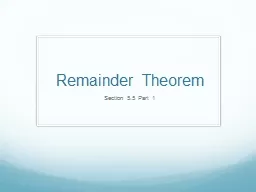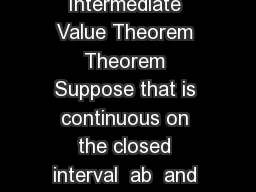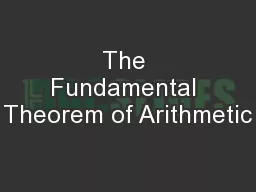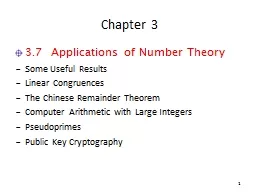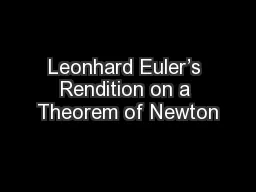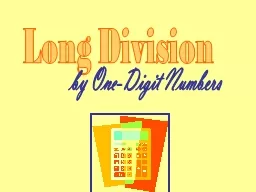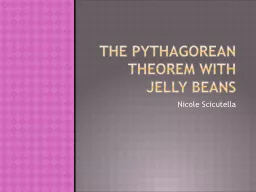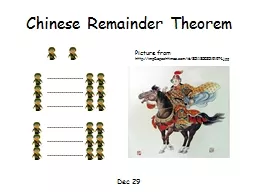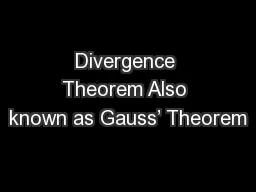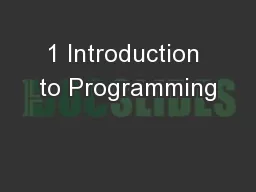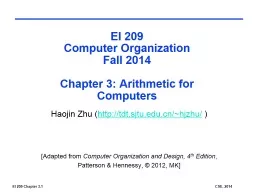PPT-Remainder Theorem
Author : pamella-moone | Published Date : 2017-06-07
Section 55 Part 1 One method used to divide polynomials similar to the way you divide numbers A method used to divide any polynomial by divisor of the form x
Presentation Embed Code
Download Presentation
Download Presentation The PPT/PDF document "Remainder Theorem" is the property of its rightful owner. Permission is granted to download and print the materials on this website for personal, non-commercial use only, and to display it on your personal computer provided you do not modify the materials and that you retain all copyright notices contained in the materials. By downloading content from our website, you accept the terms of this agreement.
Remainder Theorem: Transcript
Download Rules Of Document
"Remainder Theorem"The content belongs to its owner. You may download and print it for personal use, without modification, and keep all copyright notices. By downloading, you agree to these terms.
Related Documents

